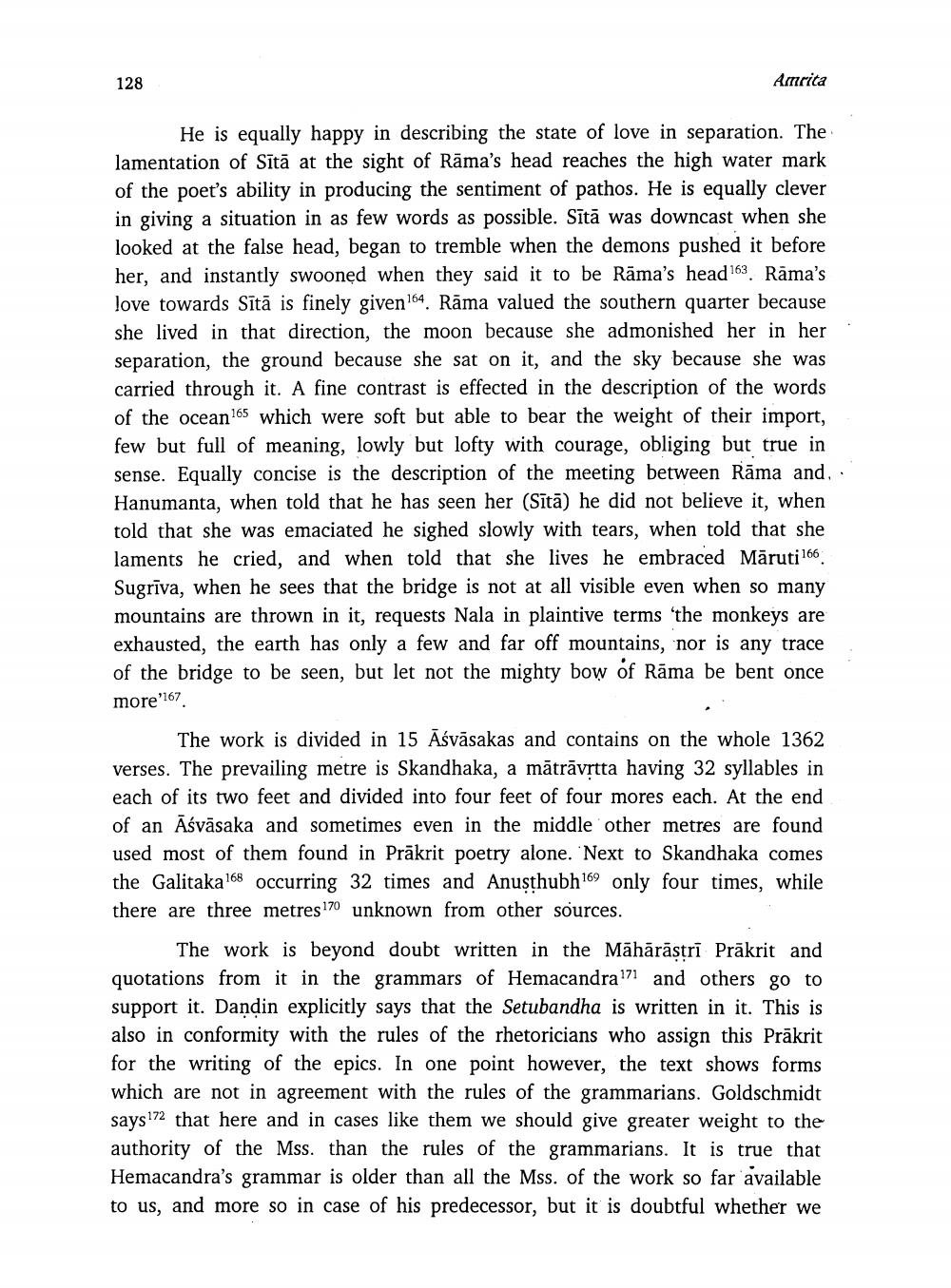________________
128
Amrita
He is equally happy in describing the state of love in separation. The lamentation of Sītā at the sight of Rāma's head reaches the high water mark of the poet's ability in producing the sentiment of pathos. He is equally clever in giving a situation in as few words as possible. Sītā was downcast when she looked at the false head, began to tremble when the demons pushed it before her, and instantly swooned when they said it to be Rāma's head 163. Rāma's love towards Sītā is finely given 164. Rāma valued the southern quarter because she lived in that direction, the moon because she admonished her in her separation, the ground because she sat on it, and the sky because she was carried through it. A fine contrast is effected in the description of the words of the ocean265 which were soft but able to bear the weight of their import, few but full of meaning, lowly but lofty with courage, obliging but true in sense. Equally concise is the description of the meeting between Rāma and, Hanumanta, when told that he has seen her (Sītā) he did not believe it, when told that she was emaciated he sighed slowly with tears, when told that she laments he cried, and when told that she lives he embraced Māruti 166 Sugrīva, when he sees that the bridge is not at all visible even when so many mountains are thrown in it, requests Nala in plaintive terms 'the monkeys are exhausted, the earth has only a few and far off mountains, nor is any trace of the bridge to be seen, but let not the mighty bow of Rāma be bent once more'167
The work is divided in 15 Āśvāsakas and contains on the whole 1362 verses. The prevailing metre is Skandhaka, a mātrāvrtta having 32 syllables in each of its two feet and divided into four feet of four mores each. At the end of an Aśvāsaka and sometimes even in the middle other metres are found used most of them found in Prākrit poetry alone. Next to Skandhaka comes the Galitaka168 occurring 32 times and Anusthubh 169 only four times, while there are three metres 170 unknown from other sources.
The work is beyond doubt written in the Māhārāstrī Prākrit and quotations from it in the grammars of Hemacandra 171 and others go to support it. Dandin explicitly says that the Setubandha is written in it. This is also in conformity with the rules of the rhetoricians who assign this Prākrit for the writing of the epics. In one point however, the text shows forms which are not in agreement with the rules of the grammarians. Goldschmidt says 172 that here and in cases like them we should give greater weight to the authority of the Mss. than the rules of the grammarians. It is true that Hemacandra's grammar is older than all the Mss. of the work so far available to us, and more so in case of his predecessor, but it is doubtful whether we




